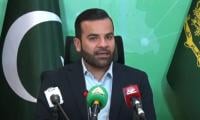Prime Minister Imran Khan announced the Ehsaas Rashan Riayat programme November 3, 2021. The programme is administered by the Poverty Alleviation and Social Safety division, Government of Pakistan.
Under this programme, a registered family is provided a subsidy of Rs1000 per month on the purchase of flour, oil and pulses. Per the available information, the selection of a family is made based on a recently conducted Ehsaas Survey.
In total, 20 million (two crore) families or about 130 million (53 percent) people will benefit from this scheme. For the current half fiscal year, the total allocated budget for this programme is Rs120 billion. The funds are to be provided by the federal government and all provincial governments that are included in the Ehsaas Rashan help programme. Currently, Khyber Pakhtunkhwa, Punjab, Azad Jammu and Kashmir, and Gilgit-Baltistan are included in this programme, while Sindh and Balochistan have yet to join the programme.
One of the key components of this programme is the selection criterion. In other words, how is a family selected by the government to be part of this programme? The available information mentions that the government has conducted an Ehsaas Survey across the country and families found eligible in the survey can avail this programme. Every aspirant of the programme is asked to send their CNIC number to 8171 and the details of such a person are counter-checked in the database of eligible families. They are offered subsidised ‘rashan’ if found in the list; otherwise, they are naturally rejected.
What is the issue in this system? Inherently, it has two major issues – high cost of reaching out to deserving families, and lack of dynamism. Essentially, the collection of information about an eligible person/family is very costly and a one-time survey might not be enough for sorting out eligible families over time. This needs repeated surveys. But doing a survey on a regular basis with short intervals is almost impossible due to the high cost.
On the other hand, without such repeated surveys we will not be able to know whether some eligible families are no more eligible after some time, or if some ineligible families have become eligible. This takes us to a dilemma. Efficiency requires repeated surveys, while the cost of such repeated surveys is making it unachievable. Hence, we either suffer from the inefficiency of cost or the inefficiency of information. How to solve this dilemma – or how to solve the issue of collecting repeated information with a low level of transaction cost?
For this purpose, we recommend the Mosque-based Mukhwat (MBM) model. Under the MBM model, the khateeb of a mosque or committee of the mosque will be given the task of identifying poor families around the same mosque via a questionnaire to be given to them by government officials.
It is pertinent to mention that almost each mosque in Pakistan has an administrative committee from the local population and those who offer regular prayers. The administrative body of each mosque has information about, almost all, families living around the same mosque. So every administrative body of a mosque can easily provide to the government information about the total number of families in the surrounding areas of that mosque.
This information can be provided on the same questionnaire since the government is interested in the CNIC number and comments about who qualifies as poor or not poor. The mosque may even be able to provide information that those among the poor are suffering from abject poverty and hunger. Such information can be provided voluntarily by each mosque or with a very low level of cost.
After receiving such information, the government can target only those families which fall among the poor in the provided list by a mosque committee. To double check for any error, the federal or provincial authorities can conduct a random check. They can randomly choose a few mosques and a few families of those mosques from the provided list and conduct a detailed survey from such families. This will provide an opportunity to the authorities to validate the information provided by the administration of a mosque. Such validation by the government will cost little but will remove any doubt about the lists. In addition, this validation process will make the process more objective and also play the role of a silent threat on the administrative committee of a mosque for providing wrong information about the list of poor families.
The inclusion of the MBM model for the collection of information about the poor families will make this process more dynamic. As the cost of collection is negligible for the administrative committee, they can update the list on a regular basis after some interval (six months or a year). On the other hand, the collection of such information via a national level survey sometimes costs a large pie of the total budget of the programme. And still, there is no system of double checking without bearing further transaction costs of conducting surveys.
The collection of information based on the MBM model is likely to solve the issues of collecting information with minimum possible cost along with the provision of double checking and dynamism. We will request the poverty alleviation division and policymakers of Pakistan to consider the cost effective process of including the MBM model for the alleviation of poverty and hunger and in transferring the benefit of subsidy to the targeted families.
One acknowledgment: the idea is based on the Mosque Based Mukhwat model presented and advocated by Dr Muhammad Fahim Khan, a renowned economist. He can be contacted at mfahimkhan@gmail.com
The writer is associate professor at the School of Economics at the Quaid-e-Azam University. He can be reached at: anwar@qau.edu.pk
By taking risks to criticize repressive governments or powerful, journalists, poets and writers work towards freedom...
Internet’s anonymity and accessibility provides fertile ground for terrorist groups to solicit funds
Pakistan identified the need for education as a critical priority for the nascent state right after its creation
The 11th UBL Literature and Arts Awards ceremony held recently in Karachi was one such exception
A representational image of Gordharo Dam near Nagarparkar city. — Facebook/karoonjhar.photography/FileThis is the...
A representational image showing a foreign currency dealer counting US dollars at a shop in Karachi. — AFP/File Are...







